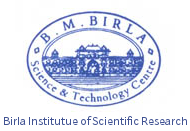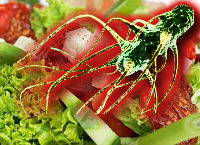Organism Details:
Shape and Size
�h�i�g�h�l�y� �a�e�r�o�b�i�c�
� �v�a�r�i�a�b�l�e� �i�n� �s�h�a�p�e�(� �g�l�o�b�o�s�e� �t�o� �o�v�a�l�)� �a�n�d� �s�i�z�e�,�9�.�7� �x� �1�0� �¼�m
Genome Information
Aspergillus flavus is a haploid filamentous fungus. The genome structure of Aspergillus flavus consists of 13485 genes and 13485 proteins. The GC content of Aspergillus flavus is about 48.40%. Genomin data is not available presenlty as sequencing is going on.
Food Source
Cereals are also a common substrate for growth of A. flavus but, unlike the case of nuts and oilseeds, small grain cereal spoilage by A. flavus is almost always the result of poor handling. Aflatoxin levels in small grains are rarely significant (Stoloff, 1977). Spices sometimes contain A. flavus (Pitt and Hocking, 1985a) and viable counts may be very mgh. However, the quantities of spices consumed are so small that aflatoxin in spices does not appear to be a real hazard. n tree nuts, peanuts, and other oilseeds, including corn and cottonseed, Brazil nuts, pecans, pistachio nuts, and walnuts. Other grains and nuts are susceptible but less prone to contamination.rice Meat and Meat Products
Milk and Milk Products
Soft Cheeses
Hard Cheeses
Fish and Fish Products
Fruits and Vegetables
Water and Beverages
Delicatessen
Cereals
Spices
Honey
Eggs
Pathological Factor
A. flavus produces aflatoxins;cyclopiazonic acid.
The aflatoxins are a group of structurally related toxic compounds produced by certain strains of the fungi Aspergillus flavus and A. parasiticus. Under favorable conditions of temperature and humidity, these fungi grow on certain foods and feeds, resulting in the production of aflatoxins. The major aflatoxins of concern are designated B1, B2, G1, and G2. These toxins are usually found together in various foods and feeds in various proportions; however, aflatoxin B1 is usually predominant and is the most toxic.Aflatoxin M a major metabolic product of aflatoxin B1 in animals and is usually excreted in the milk and urine of dairy cattle and other mammalian species that have consumed aflatoxin-contaminated food or feed.
Aflatoxin B-1 is metabolized by the microsomal mixed function oxidase system in the liver, leading to the formation of highly reactive intermediates, one of which is 2,3-epoxy aflatoxin B -1. Binding of these reactive intermediates to DNA results in disruption of transcription and abnormal cell proliferation, leading to mutagenesis or carcinogenesis.
Disease
Aflatoxins are both acutely and chronically toxic in animals and humans, producing acute liver damage, liver cirrhosis, tumour induction and teratogenesis. They also have
immunosuppressive effects in combination with other mycotoxins.Leading to cause mutagenesis or carcinogenesis.acute liver damage; liver cirrhosis; induction of tumours; and teratogenic effects
|








